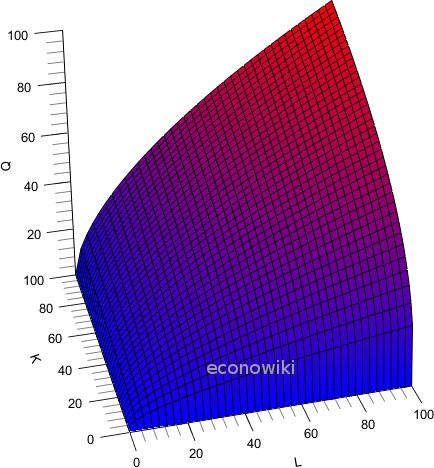en:cobb-douglas-production-function
This is an old revision of the document!
Cobb-Douglas Production Function
The Cobb-Douglas Production Function is a particular form of the Production Function.
It takes the following form:
Q(L,K) = A L^α K^β
- L:labor
- K:capital
- Q:output
- A>0
- 0<α<1
- 0<β<1
The main benefits of the Cobb-Douglas production function are:
- The marginal product is positive and decreasing.
- Output elasticity is constant, equal to α for L or β for K.
- Return to scale are constant and equal to α+β
Plot of a Cobb-Douglas production function:

en/cobb-douglas-production-function.1427384933.txt.gz · Last modified: 2015/10/13 13:40 (external edit)
Discussion
If it is possible can someone post a real applicable example of how to calculate the elasticity of output with respect to labor and capital on Cobb Douglas function
Example function:
[1] Q=10 L^0.4 K^0.6Output elasticity (OE) with respect to K:
[2] (∂Q/∂K) / (Q/K)[3] (∂Q/∂K) = 10 L^0.4 0.6 K^-0.4[4] (Q/K) = 10 L^0.4 K^-0.4Then, the output elasticity is: [3]/[4] (notice that almost all components of [3] and [4] all the same, so they cancel each other.
[5] Output Elasticity = 0.6Complete case example should be better.